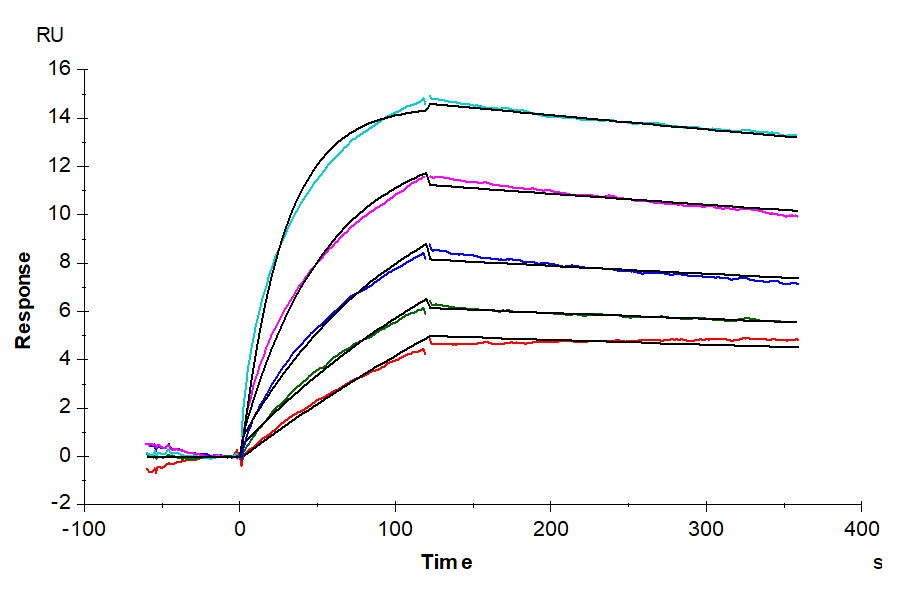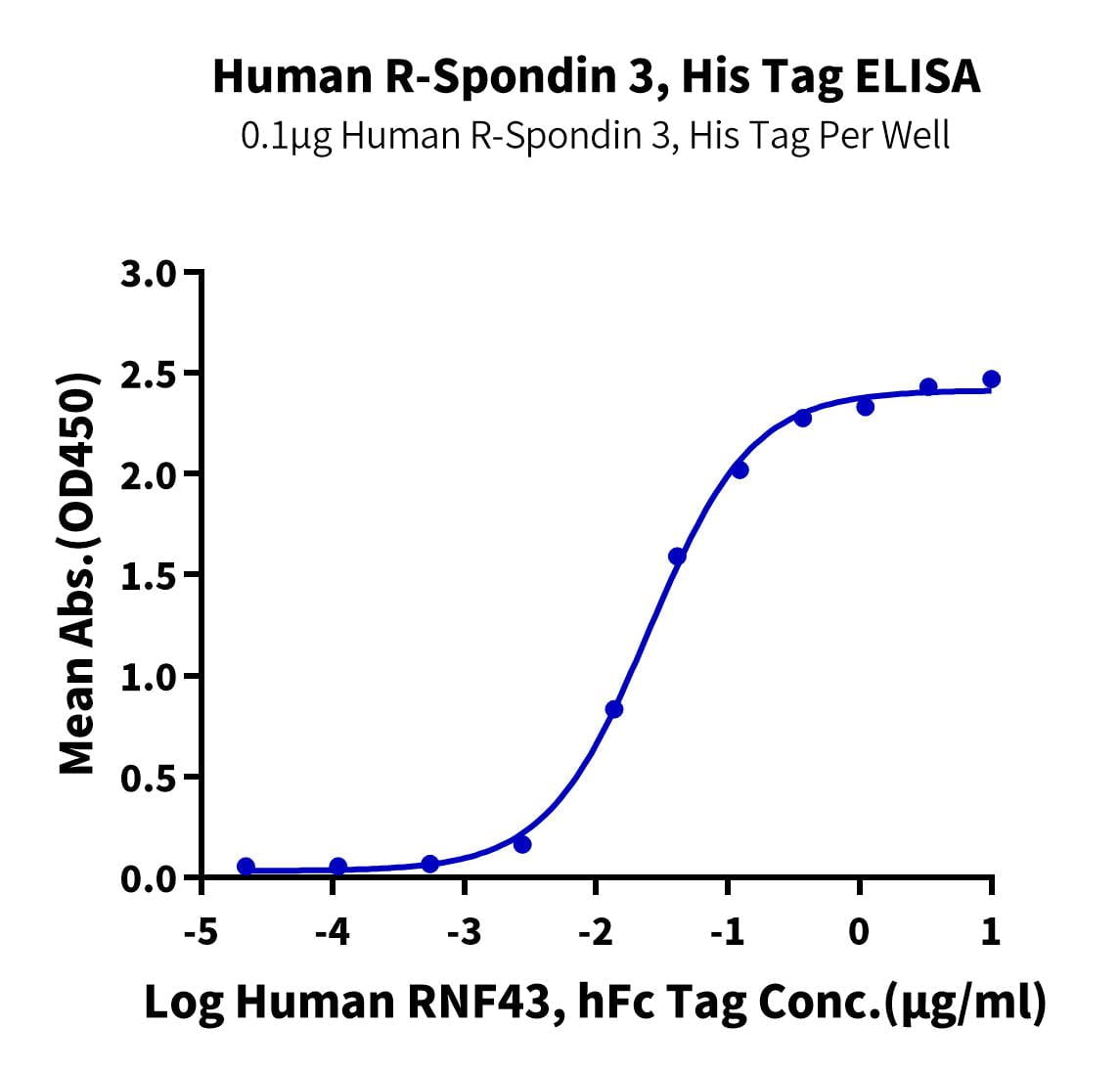| Weight | 1 lbs |
|---|---|
| Dimensions | 9 × 5 × 2 in |
| accession | Q9BXY4 |
| express system | HEK293 |
| product tag | C-His |
| purity | > 95% as determined by Tris-Bis PAGE |
| background | The R-spondins are members of a superfamily of thrombospondin type 1 repeat (TSR-1)-containing proteins. The prototype member (discovered in 1971) was isolated from platelets that had been stimulated with thrombin, and was therefore designated 'thrombin-sensitive protein. |
| molecular weight | The protein has a predicted MW of 14.95 kDa. Due to glycosylation, the protein migrates to 20-25 kDa and 26-32 kDa based on Tris-Bis PAGE result. |
| available size | 100 µg, 500 µg |
| endotoxin | Less than 1EU per μg by the LAL method. |
Human R spondin 3/RSPO3 Protein 2639
$240.00 – $800.00
Summary
- Expression: HEK293
- Functional: Yes (ELISA)
- Amino Acid Range: Gln22-Val146
Human R spondin 3/RSPO3 Protein 2639
| protein |
|---|
| Size and concentration 100, 500µg and lyophilized |
| Form Lyophilized |
| Storage Instructions Valid for 12 months from date of receipt when stored at -80°C. Recommend to aliquot the protein into smaller quantities for optimal storage. Please minimize freeze-thaw cycles. |
| Storage buffer Shipped at ambient temperature. |
| Purity > 95% as determined by Tris-Bis PAGE |
| target relevance |
|---|
| The R-spondins are members of a superfamily of thrombospondin type 1 repeat (TSR-1)-containing proteins. The prototype member (discovered in 1971) was isolated from platelets that had been stimulated with thrombin, and was therefore designated 'thrombin-sensitive protein. |
| Protein names R-spondin-3 (Protein with TSP type-1 repeat) (hPWTSR) (Roof plate-specific spondin-3) (hRspo3) (Thrombospondin type-1 domain-containing protein 2) |
| Gene names RSPO3,RSPO3 PWTSR THSD2 |
| Protein family R-spondin family |
| Mass 9606Da |
| Function Activator of the canonical Wnt signaling pathway by acting as a ligand for LGR4-6 receptors, which acts as a key regulator of angiogenesis. Upon binding to LGR4-6 (LGR4, LGR5 or LGR6), LGR4-6 associate with phosphorylated LRP6 and frizzled receptors that are activated by extracellular Wnt receptors, triggering the canonical Wnt signaling pathway to increase expression of target genes. Also regulates the canonical Wnt/beta-catenin-dependent pathway and non-canonical Wnt signaling by acting as an inhibitor of ZNRF3, an important regulator of the Wnt signaling pathway. Acts as a ligand for frizzled FZD8 and LRP6. May negatively regulate the TGF-beta pathway (PubMed:21727895, PubMed:21909076, PubMed:22615920). Acts as a key regulator of angiogenesis by controlling vascular stability and pruning: acts by activating the non-canonical Wnt signaling pathway in endothelial cells (By similarity) (PubMed:21727895, PubMed:21909076, PubMed:22615920). Can also amplify Wnt signaling pathway independently of LGR4-6 receptors, possibly by acting as a direct antagonistic ligand to RNF43 and ZNRF3 (PubMed:29769720). |
| Catalytic activity #N/A |
| Subellular location Secreted . |
| Tissues Ubiquitously expressed. Expressed at higher level in placenta, small intestine, fetal thymus and lymph node (PubMed:12463421). Highly expressed in endothelial cells (PubMed:26766444). |
| Structure Interacts with the extracellular domain of FZD8 and LRP6 (By similarity). It however does not form a ternary complex with FZD8 and LRP6 (By similarity). Interacts with WNT1 (By similarity). Binds heparin. Interacts with LGR4, LGR5 and LGR6 (PubMed:21727895, PubMed:21909076, PubMed:22615920). |
| Domain Th |
| Target Relevance information above includes information from UniProt accession: Q9BXY4 |
| The UniProt Consortium |
Data
Publications
Publications
| pmid | title | authors | citation |
|---|---|---|---|
| We haven't added any publications to our database yet. | |||
Protocols
| relevant to this product |
|---|
Documents
| # | ||
|---|---|---|
| Please enter your product and batch number here to retrieve product datasheet, SDS, and QC information. | ||

















